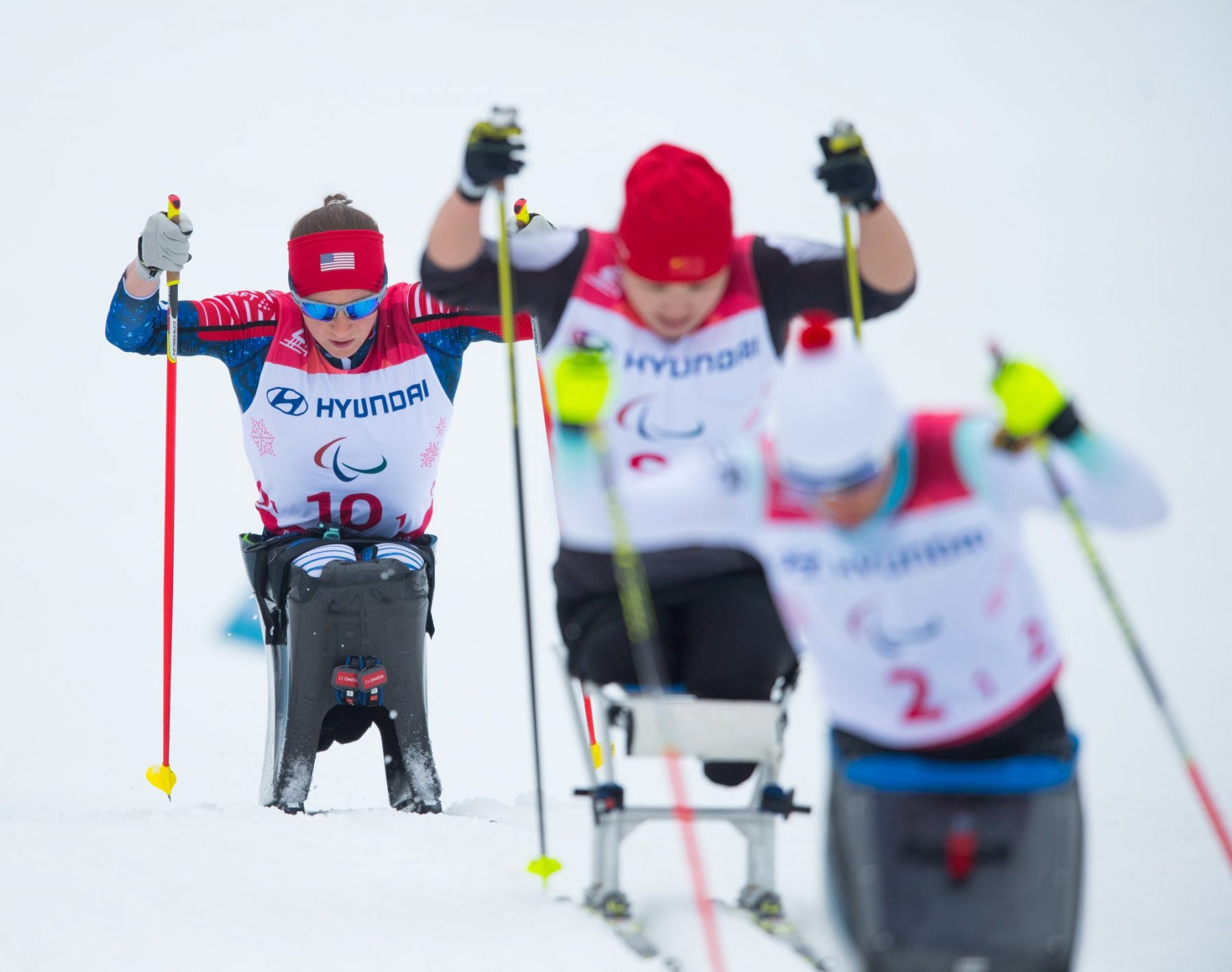

Salient Technologies is proud to partner with the U.S. Paralympics Nordic Skiing to develop a new Sit Ski Binding Interface. The director of U.S. Paralympics Nordic Skiing reached out to Salient to develop a new interface between the seats used by Paralympic athletes and the newest Nordic skis. Incredibly, these athletes use only their upper bodies to propel them forward with their poles. As a result, their skiing equipment looks a bit different than what one might picture when thinking about Nordic skiing. These athletes need two attachment points between their skis and their seats, in contrast to only one attachment point needed for traditional Nordic skiing. The seats are able to interface with the binding used to hold the toe of a ski boot for one point of contact. While the old interface relied on drilling into the ski to mount a piece used to hold the rear of the ski onto the athlete’s seat for the second point of contact, the newer Nordic skis do not have the same internal structure upon which to mount the additional rear binding piece.

Since the structure in the skis changed with the change to Fisher’s Turnamic binding interface, the only place to connect to the rear of the ski is a plastic plate bonded to the ski. We took careful measurements of this plastic plate in order to reverse engineer a component to interface with the track on the plate. The new design is mounted into the rail on the bottom of the athlete’s seat. At the front of the track there is a bar to interface with the toe piece of a typical NNN Nordic binding. Our design featured a piece that slid into the track on the rear of the ski and then locked into the toe piece of the binding system. This system holds the seat securely to the skis without any modifications to the skis, besides removing the rear binding piece. This new system is also beneficial because it can be adjusted forward and backward on the ski to adjust for differing snow conditions.

We made our first version out of aluminum because it is lightweight and very durable. Through testing we discovered that the metal can ice up and make it difficult to remove the skis. Additionally, because the back piece pivoted to allow the ski to slide onto the seat and then lock in the front, it could be challenging to align the skis. In our second round of prototypes we addressed these issues. We chose a durable plastic instead of the aluminum to avoid icing issues. We also added a spring to hold the device in place, making it easier to put the skis on. We have been very happy with the performance of the second prototype and have not had any major issues thus far. Testing is continuing and we will continue to work closely with the U.S. Paralympics Nordic Skiing director to add any additional modifications until the next winter Olympics.

Demri Horton is a mechanical designer at Salient Technologies. She too loves to ski.


